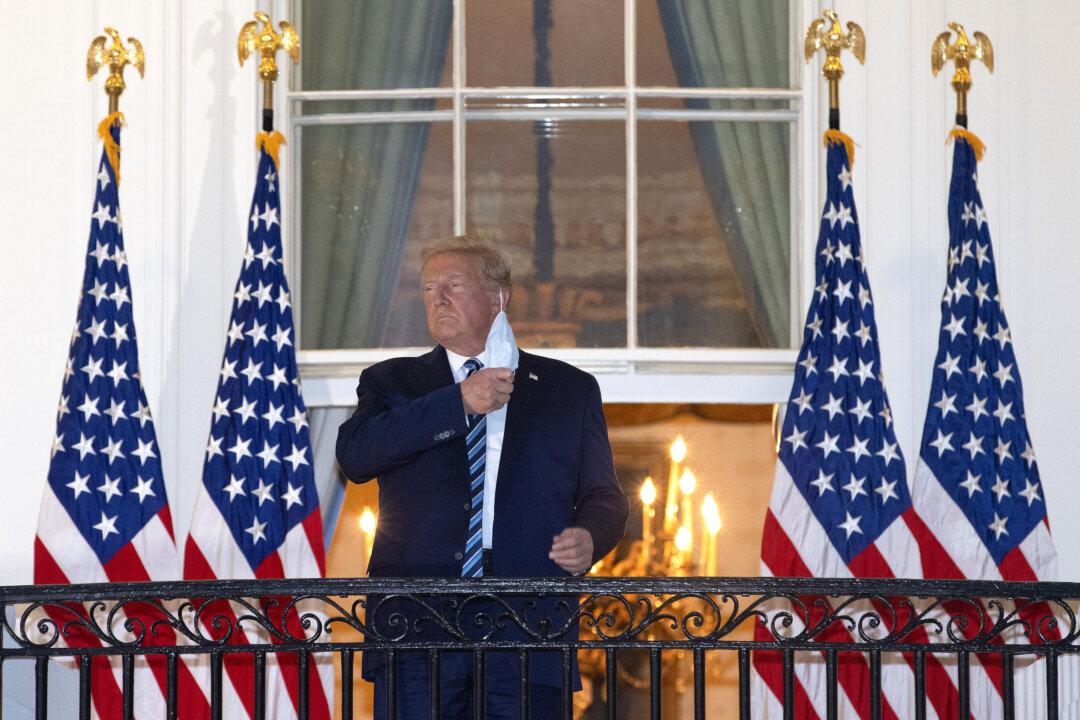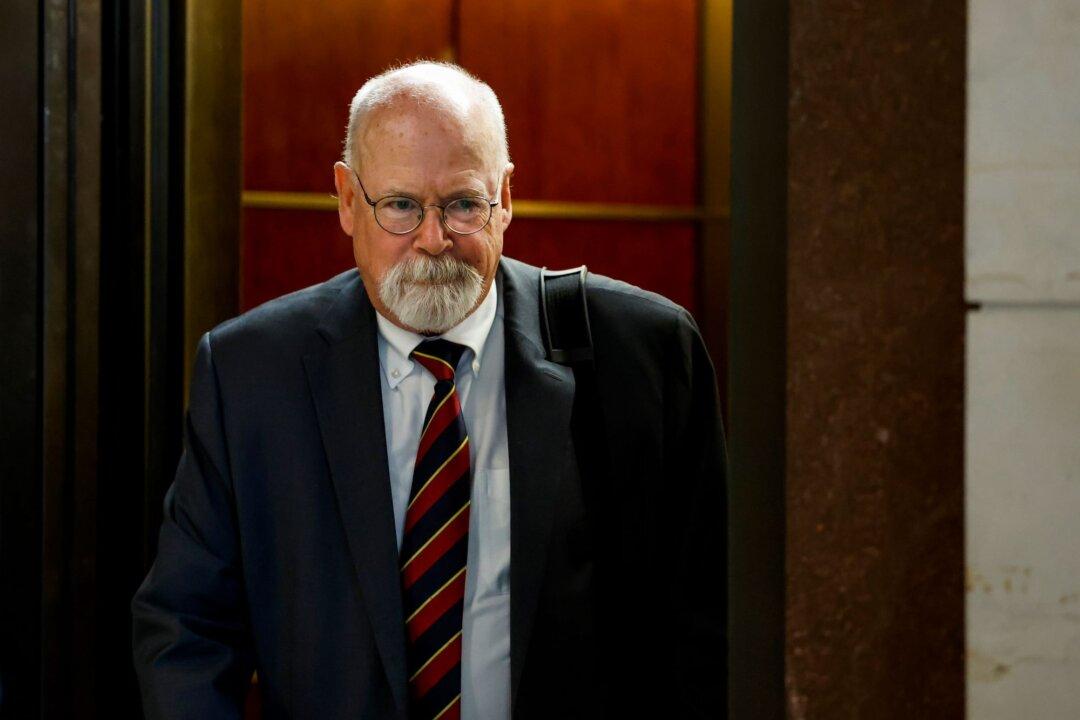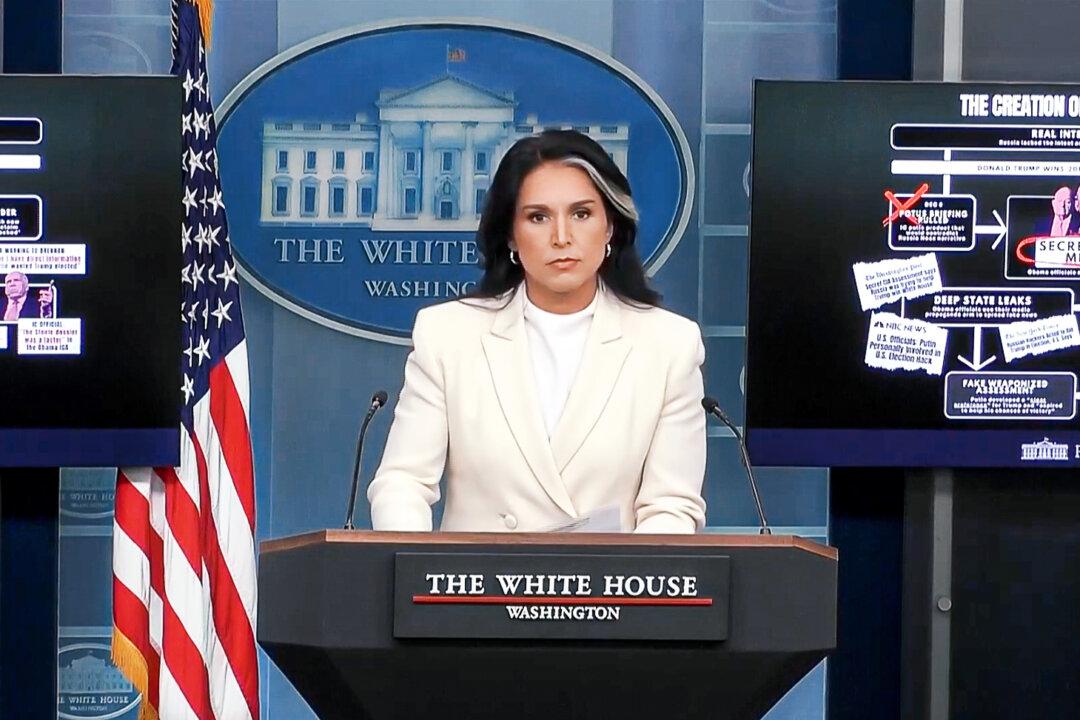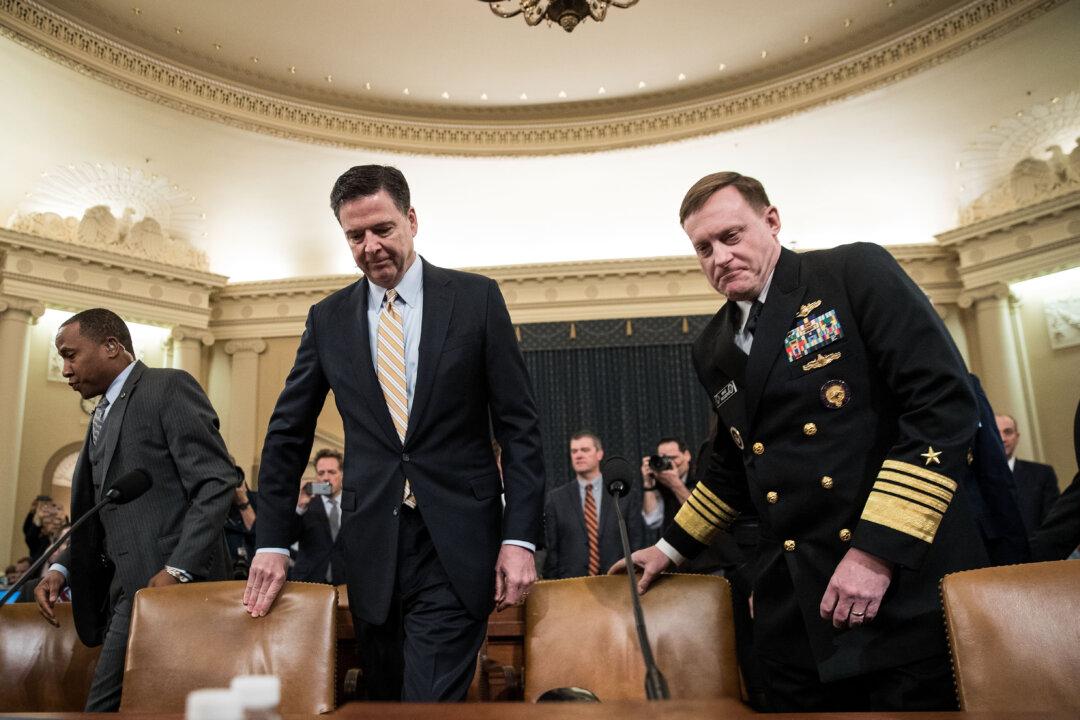President Donald Trump suggested on Monday evening that he may now be immune to the Chinese Communist Party (CCP) virus, commonly known as the coronavirus.
“Now I’m better and maybe I’m immune,” Trump said in a video filmed at the White House and posted on Twitter.





